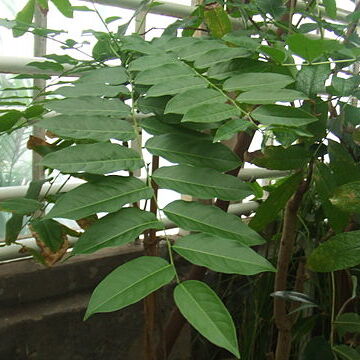Trees, shrubs or herbs; coloured latex absent. Indumentum simple (at least for Australian taxa), eglandular (sometimes glandular in Actephila). Leaves alternate (rarely opposite) to distichous, usually stipulate; lamina simple, entire or marginally toothed; foliar glands absent. Inflorescences axillary, racemiform, spiciform, glomerulate, or flowers sometimes solitary; bracts eglandular. Staminate flowers with sepals imbricate or rarely valvate (Bridelia), free or rarely connate; petals and disc present or absent; stamens 2–50; filaments free or united; pollen grains usually 3–4-colporate, periporate in Phyllanthus; pistillode present or absent. Pistillate flowers with sepals imbricate or rarely valvate, free or rarely connate; ovary 2–15 locular; ovules 2 per locule, anatropous or hemitropous; styles free, apart from at base, entire or bifid. Fruit dehiscent capsular, baccate or drupaceous; seeds ecarunculate or carunculate; endosperm present or absent.


